BODY | MEMORY | ARCHITECTURE
During its emergence, creative work calls for two simultaneous foci – the world and the self; and as a consequence of this double focus every profound work is essentially a microcosmic representation of the world and an unconscious self portrait at the same time.
The Thinking Hand, Juhani Pallasma
Introduction
As architects we don’t necessarily start with a blank slate to only resolve the functional requirements. Consciously or subconsciously we bring our histories, memories and dimensions of our ‘selves’ into the creative process. It is therefore important to acknowledge where we come from and access the various memories and experiences that have formed us. Through the act of creating spaces, the studio unit sets out to inquire into the varying degree of intimacy in the self’s relationship to the world mediated through three contexts of inhabitation growing sequentially in complexity.
Learning Outcomes
Starting with the design of small spaces of solitude, intimacy & congregation in a subterranean site, moving on to the design of a home and culminating in the design of a small institution, students will investigate the relationship of the self to the world mediated through architecture.
While we will encounter numerous questions about inhabitation and articulation of space, the four questions critical to the studio are:
- How is the creative process informed by experiences and memories?
- What is the relationship between body, memory, emotion and space?
- How do we inhabit a space?
- How can architecture anticipate futures to transcend its function?
Students will learn to apply the method of accessing their experiences & memories through drawings, associational maps, collages & models and integrate them into the design process across different scales. Peer Reviews, Visual Concept Maps & Reflective journaling are three tools & processes that will be recurrently employed.
Constituent exercises and design problems of the studio unit will help students learn to:
- Recognize the relationship between body, memory, feeling and space
- Formulate a conceptual framework (based on the above) to aid design processes across scales
- Apply a kit of parts which include elements and dimensional modules for designing spaces
- Analyze the context of a project in terms of the site, inhabitant profiles and socio-cultural specificities
- Evaluate the transformation/ growth/ expansion in contextual parameters
- Synthesize inferences from diverse processes to create relevant architecture across different scales
Task & Design briefs will explicitly define & map the interrelationship between exercise objectives, deliverables, assessment criteria and learning outcomes.
Structure
Our bodies and movements are in constant interaction with the environment; the world and the self inform and redefine each other constantly.
The Eyes of the Skin, Juhani Pallasma
A series of exercises in Module-1 focus on body, memory, emotion and space; proceeding into the first architectural exercise – My Secret Place: designing small spaces for solitude, intimacy and congregation in a subterranean site.
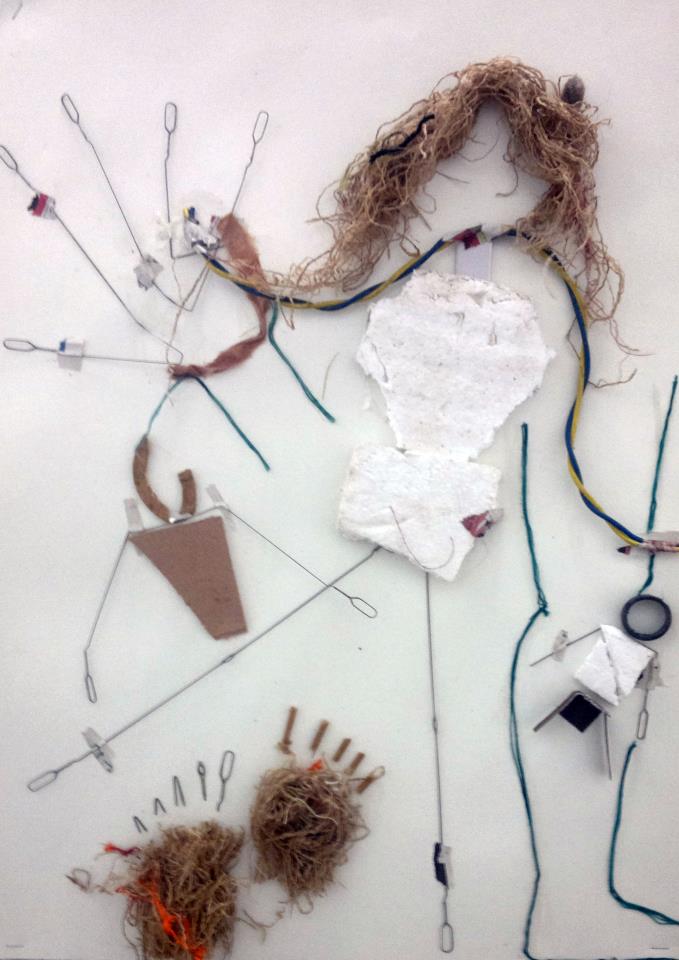
My Body; Aarushi 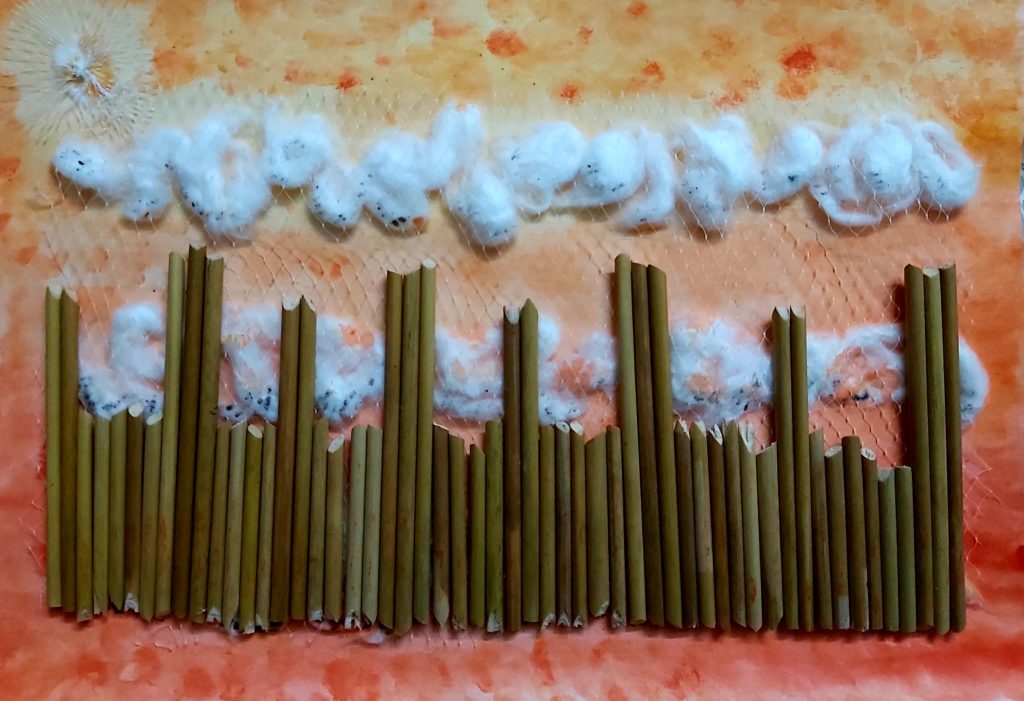
My Body; Aanchal 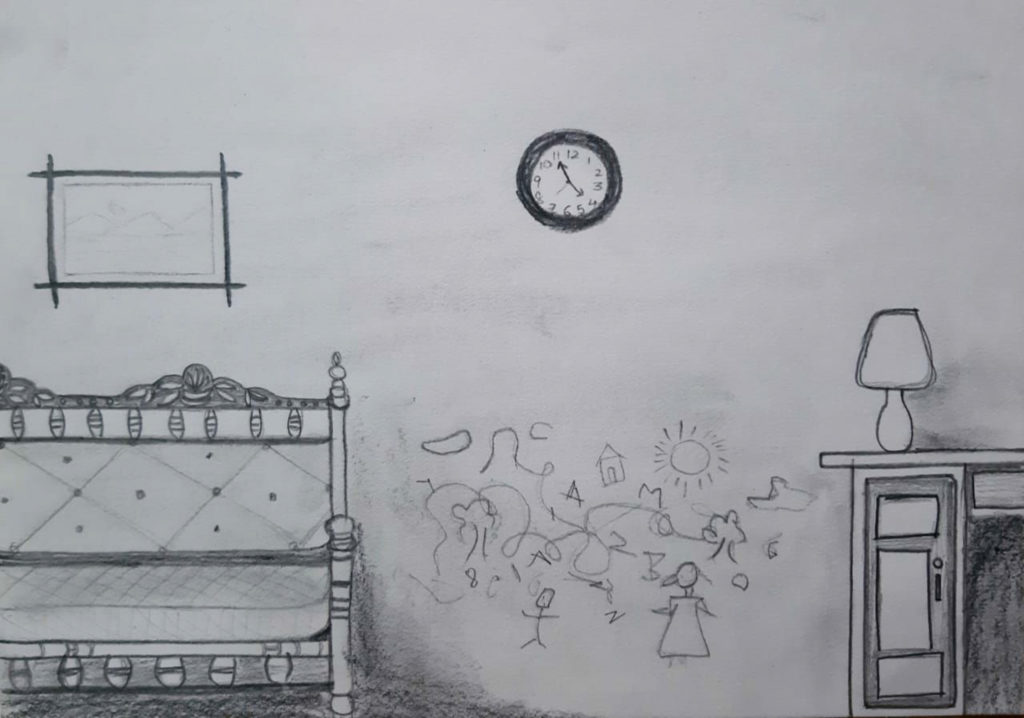
Solitude – Inside; Nainsi 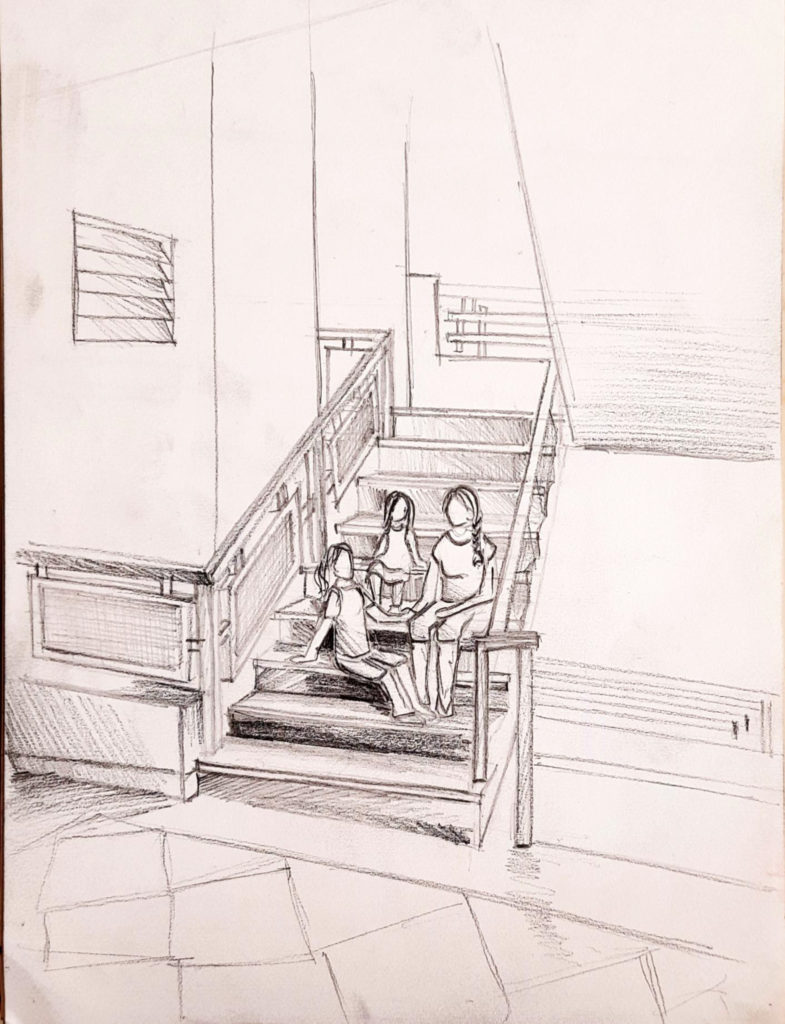
Intimacy – In-between; Nefela 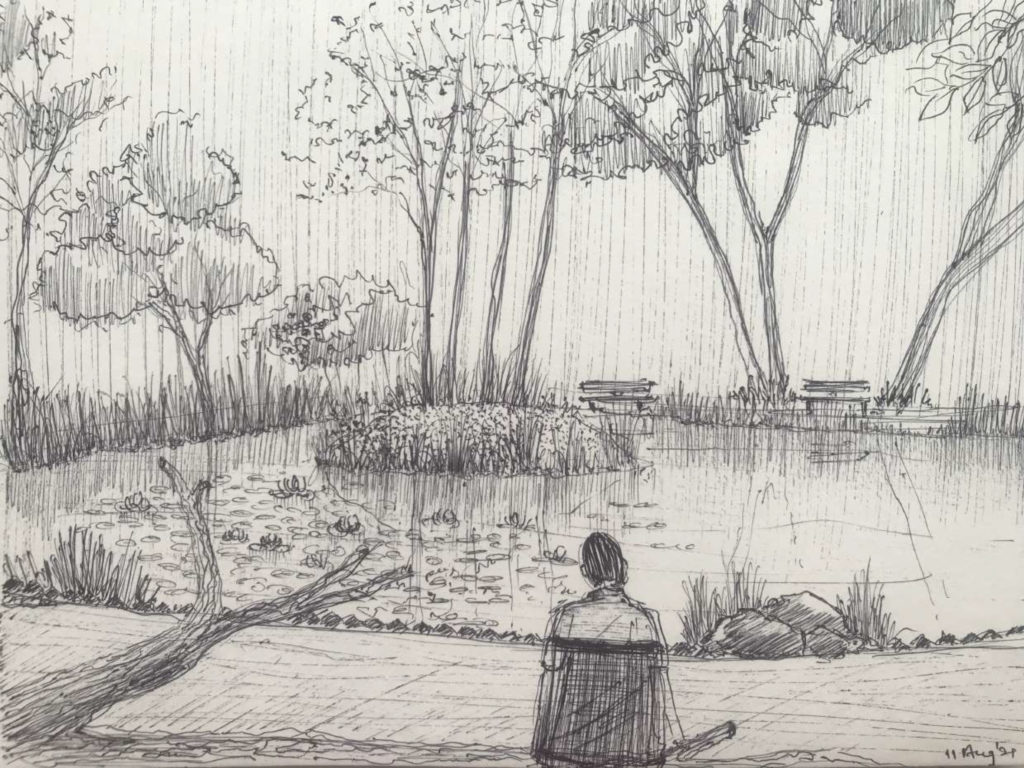
Solitude – Outside; Aastha 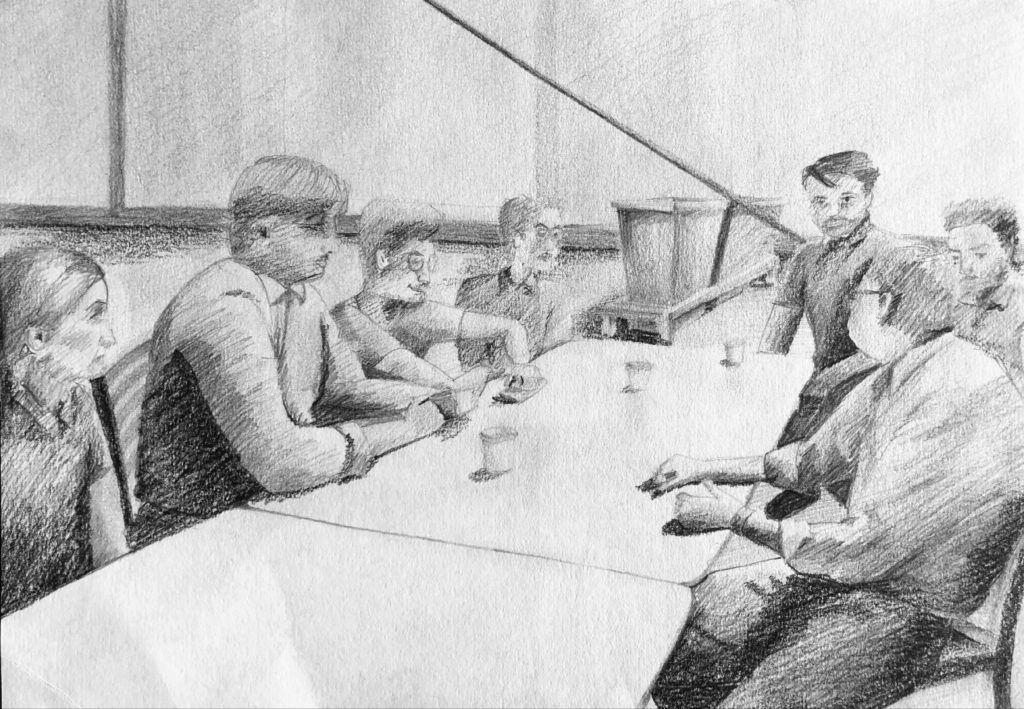
Congregation; Anshu 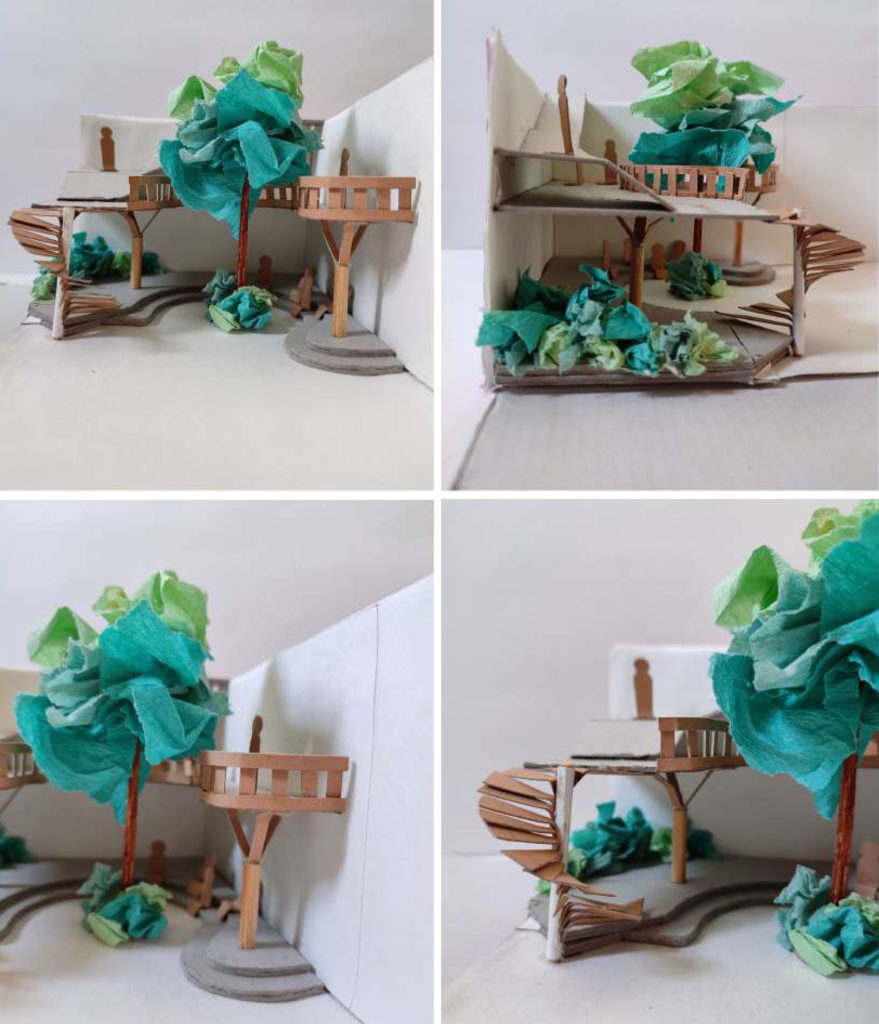
Organic Assemble; Simran 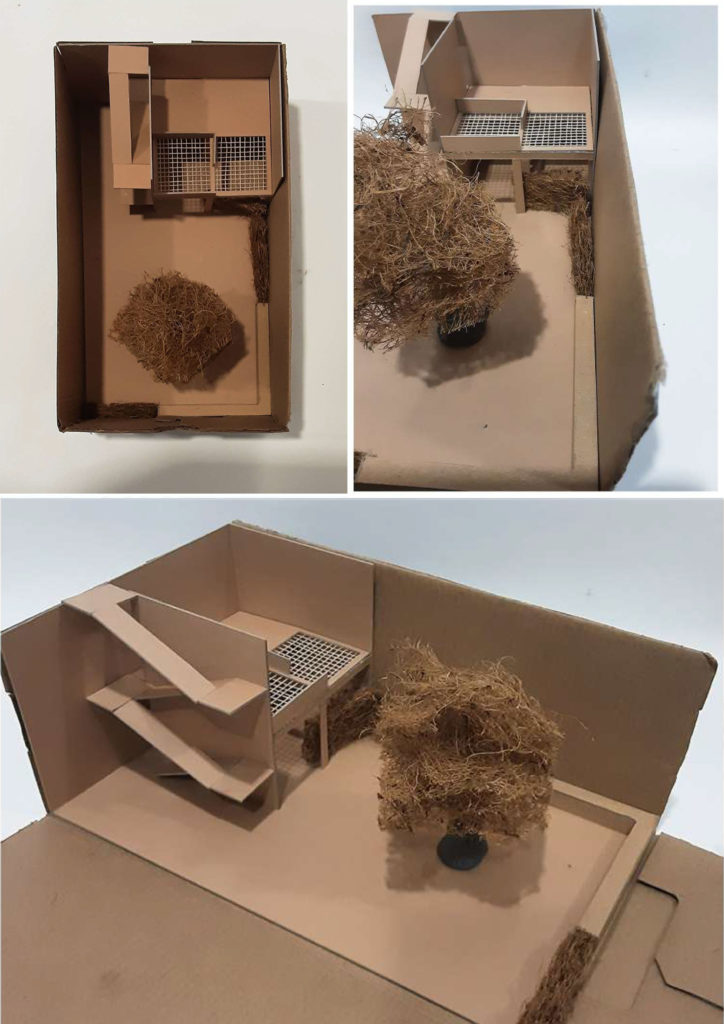
Orthogonal Construct; Eyal 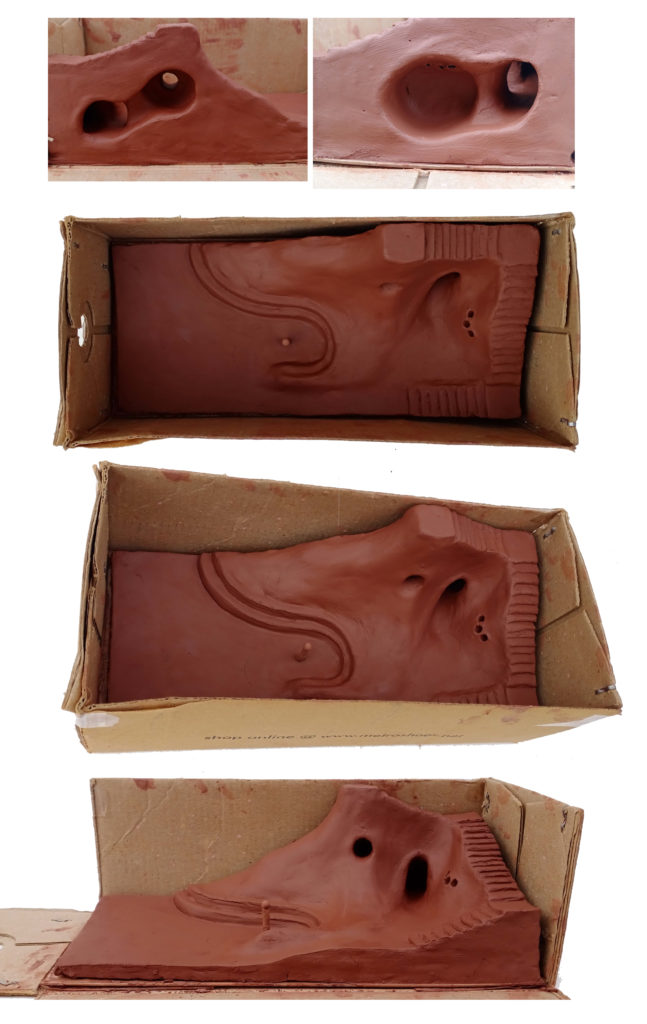
Subractive Spatiality & Form; Parth
For our house is our corner of the world….it is our first universe, a real cosmos…
Poetic of Space, Gaston Bachelard
An entire past comes to dwell in a new house…
Module-2 focuses on the home as a repository of memory, emotions & experiences. Through a set of exercises the student will revisit her childhood home, represent it through various mediums and in the process re-member it. These exercises and the design from stage 1 will feed into the second architectural exercise – A Home of Memories: a place for living, working, play and learning
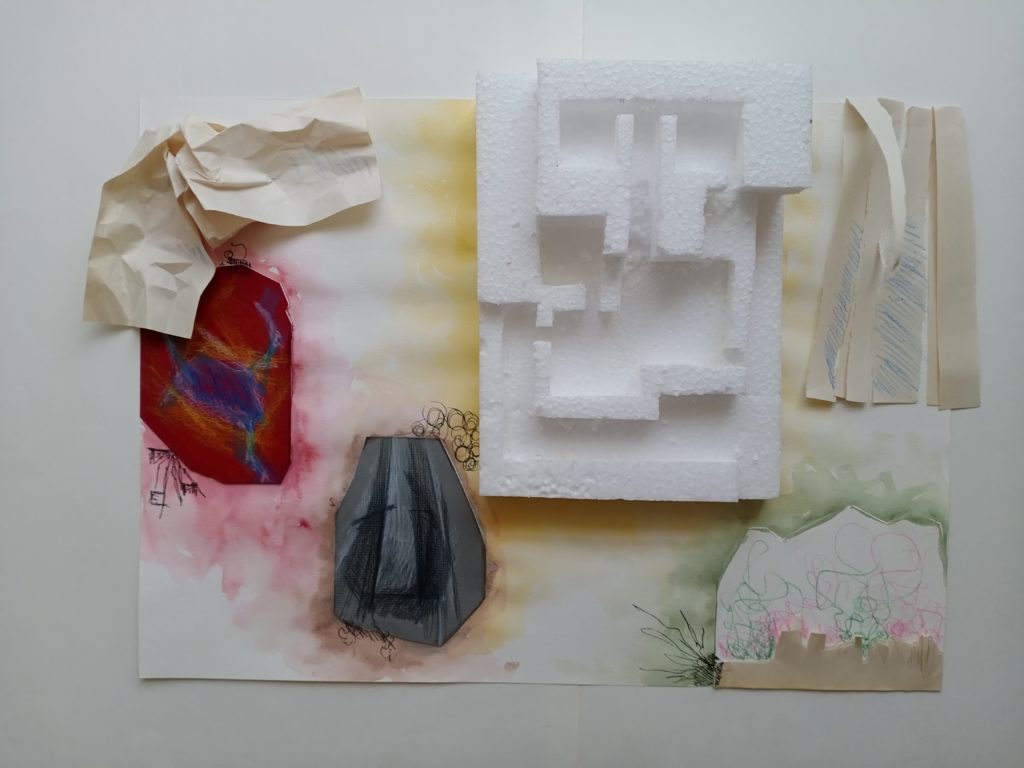
Home of Memories; Parth 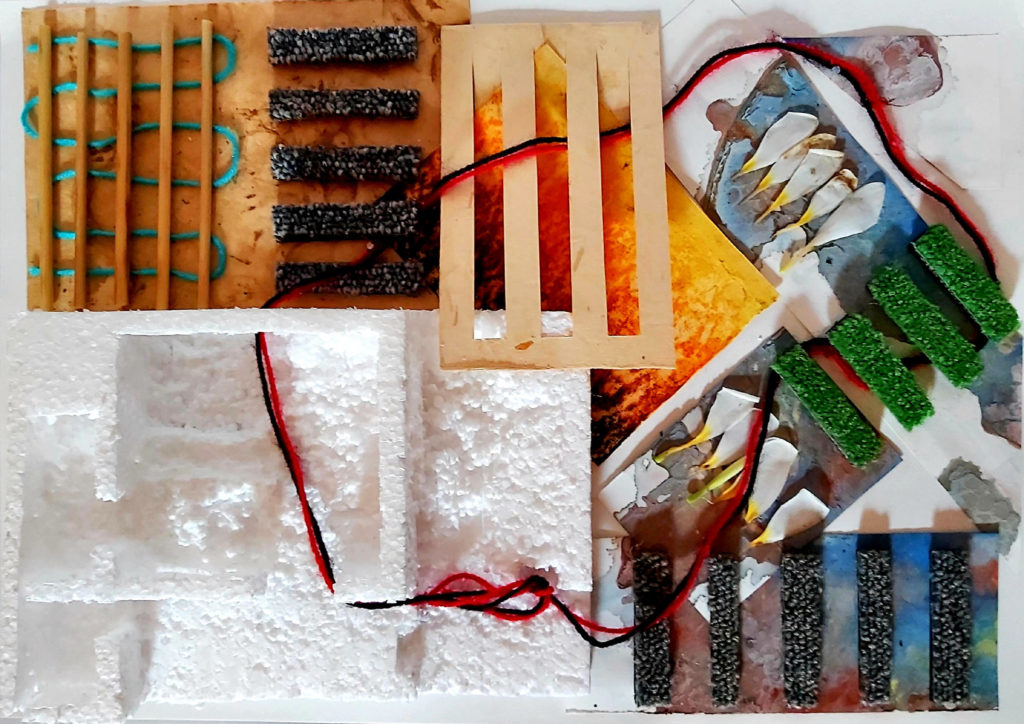
Home of Memories; Aanchal 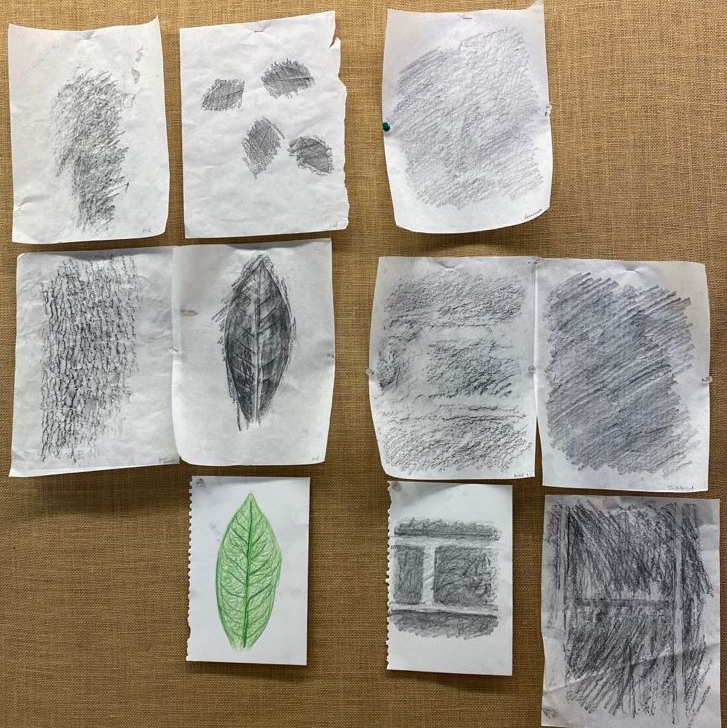
Frottage & Replication; Simran 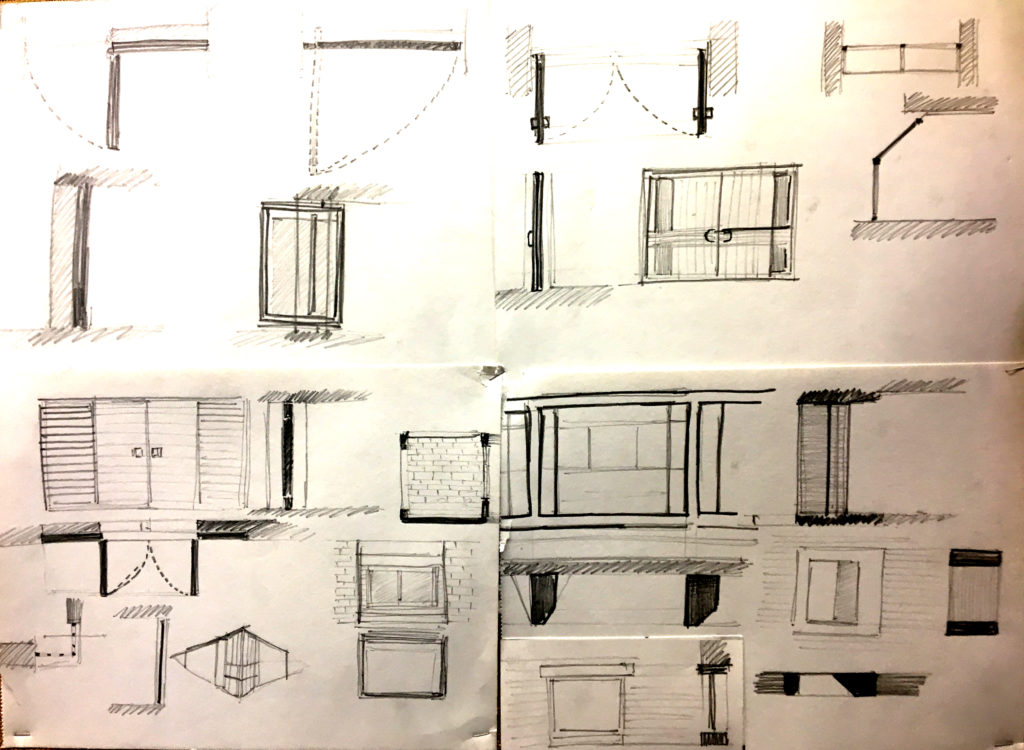
Openings’: Nature & Construct 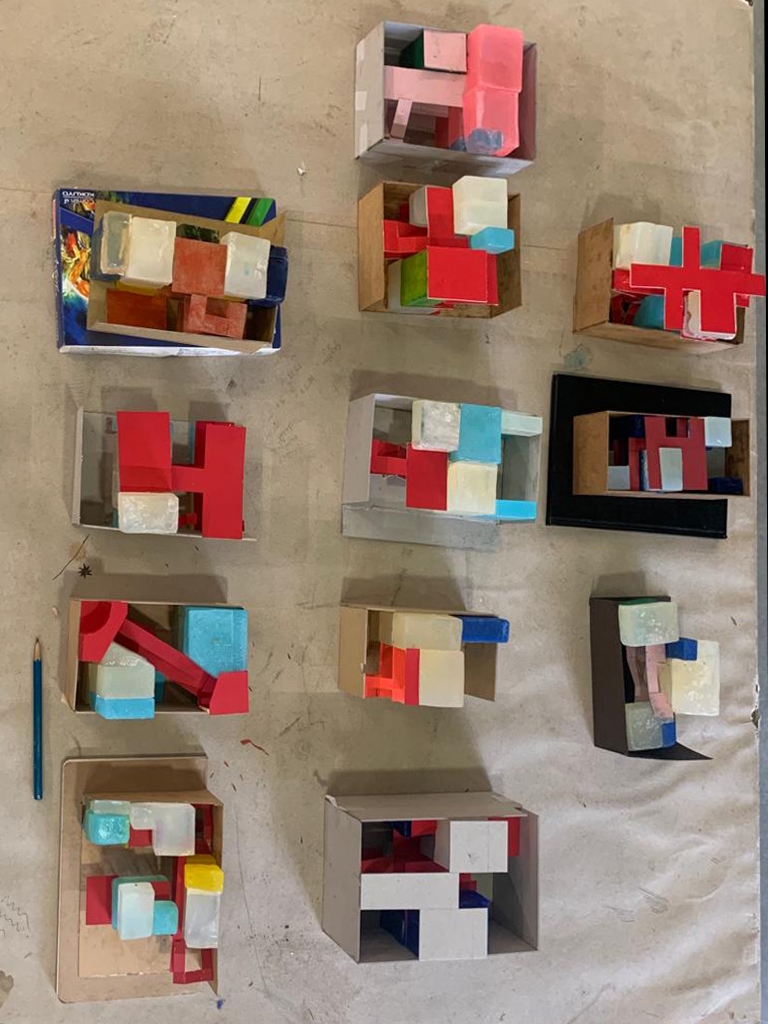
Schematic Models 
Design Development: from Scheme to Plan 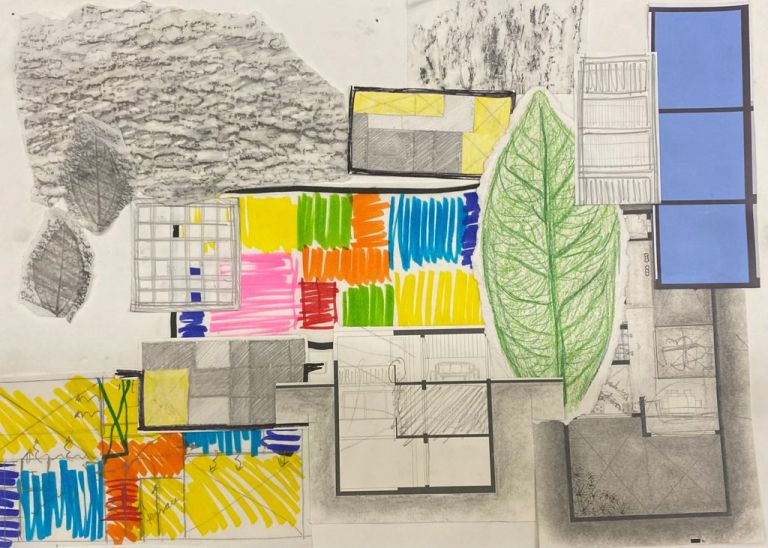
Collage of Elements & Concerns 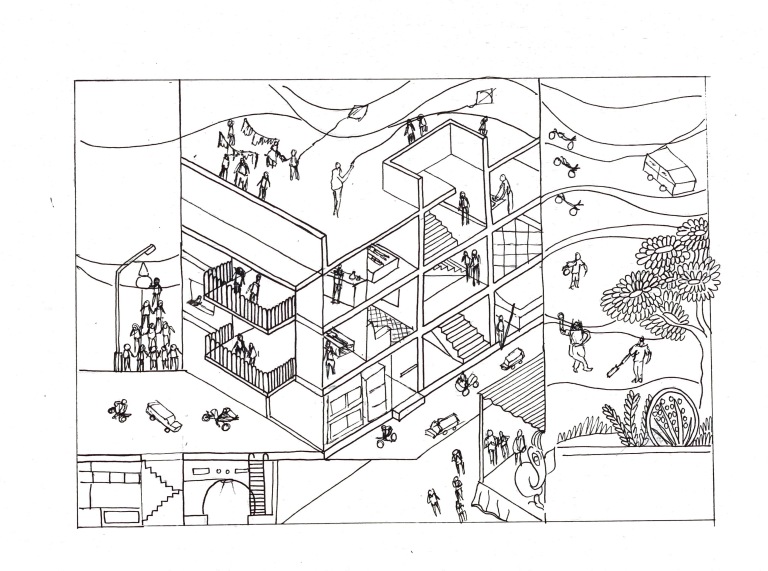
Neighborhood Map; Mahek 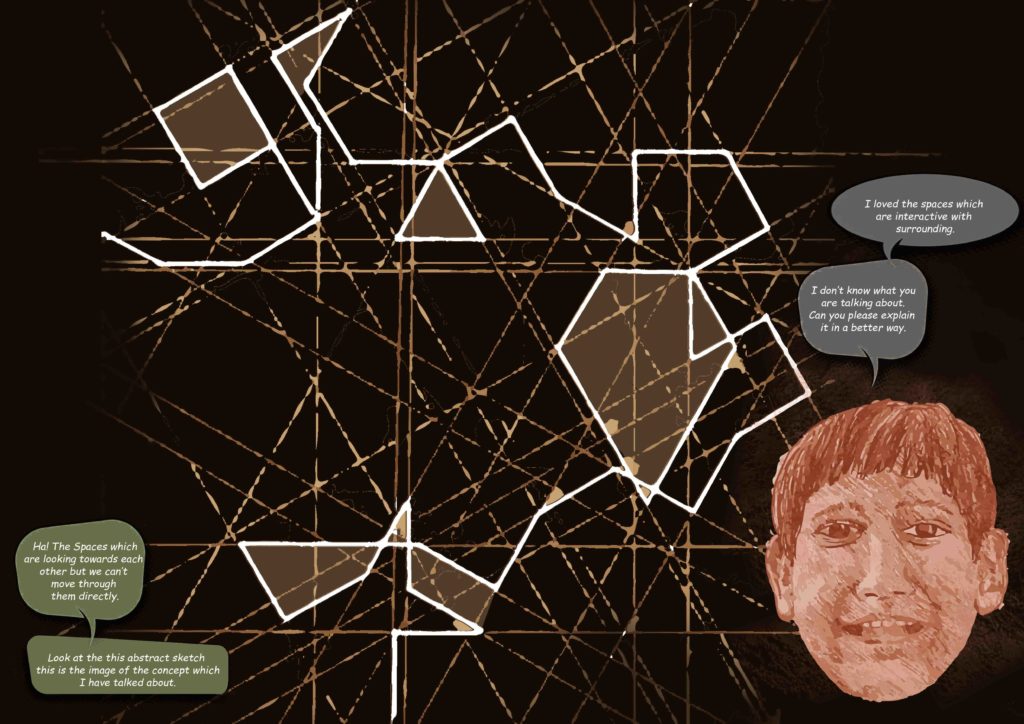
Image of a Home; Parth 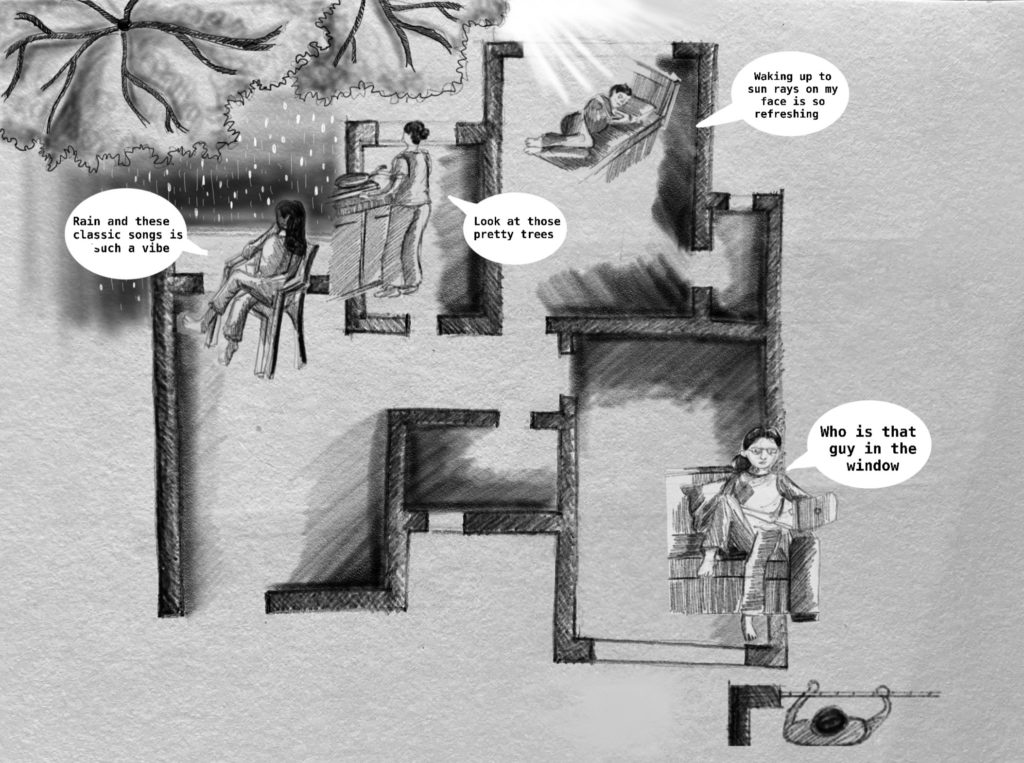
Memory of my Home; Shailly 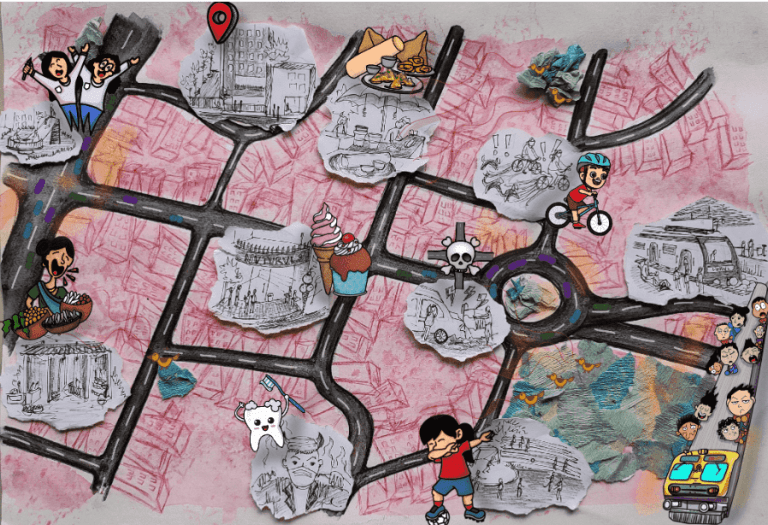
Neighborhood Map; Simran 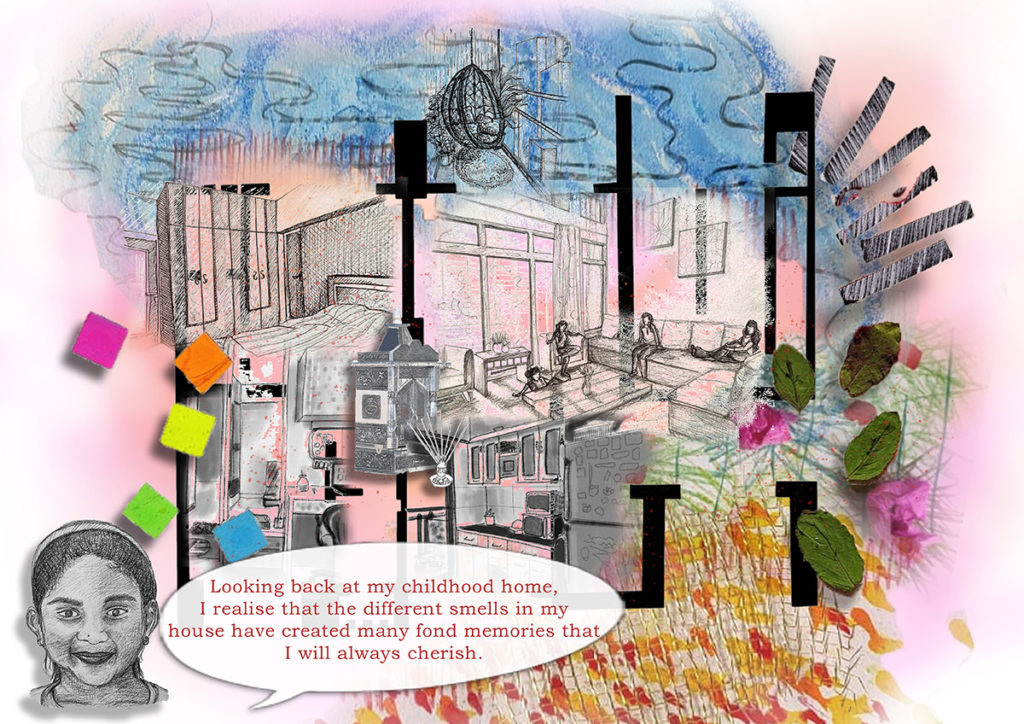
Image of a Home; Simran 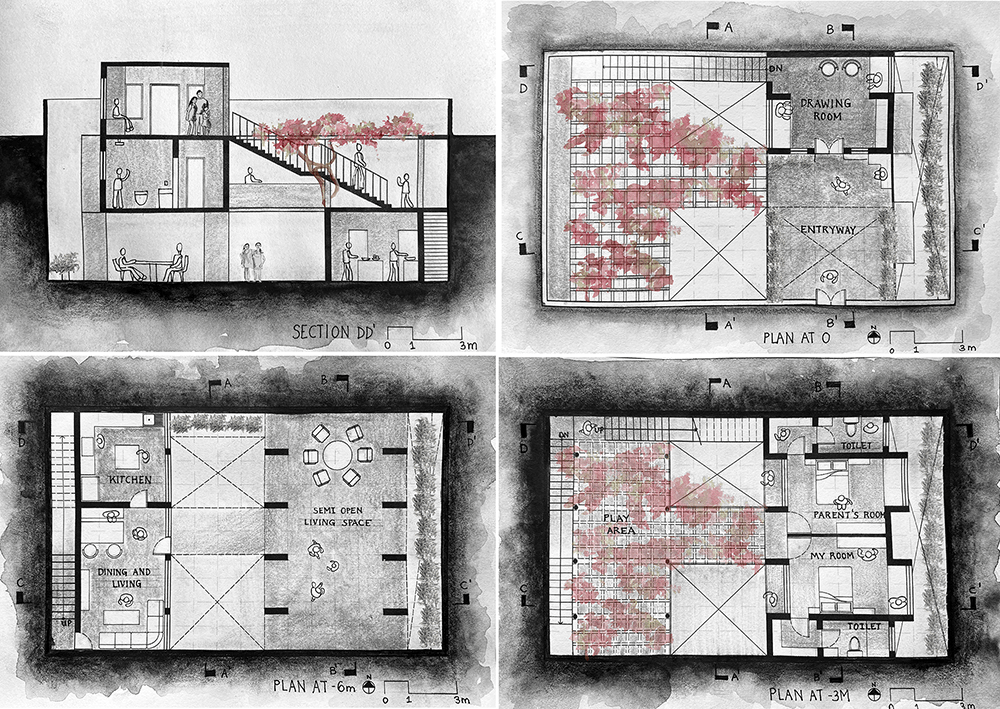
My Childhood Home; Shailly
…until we can begin to understand how buildings affect individuals and communities emotionally, how they provide people with a sense of joy, identity, and place, there is no way to distinguish architecture from any every day act of construction.
Body, Memory and Architecture, Kent C Bloomer & Charles W Moore
Transformations in the built environment in terms of extensions, revitalization & repurposing are both a necessity as well as an opportunity. Module-3 of the studio unit looks at architecture transcending its function: the home needs to grow into an institution. Through a series of exercises and the design from Module-2 the studio proceeds into the final architectural exercise – My Community Place: diversity within living, working, playing and learning.
| WK | MODULE-1: MY SECRET PLACE |
| 1 | RELATIONSHIP TO BODY & SPACE SOLITUDE, ITIMACY & CONGREGATION |
| 2 | PRIMARY & SECONDARY REFERENCES MEMORY, OBSERVATION & IMAGINATION |
| 3 | DESIGN INITIATION ECONOMY OF BUILDING AND MOVEMENT & SEQUENCING |
| 4 | DESIGN REFINEMENT CLOSURE OF MODULE-1 |
| WK | MODULE-2: MY CHILDHOOD HOME |
| 5 | REMEMBERING CHILDHOOD HOME & NEGHBORHOOD |
| 6 | ANALYSIS OF PRIMARY & SECONDARY REFERENCES APPLYING EXPERIENTIAL & CONCEPTUAL FILTERS |
| 7 | AUTOBOGRAPHICA: GATHERING THE FRAGMENTS PERSONAL BRIEF, PROGRAM & IMAGE OF THE ARCHITECTURE |
| 8 | DESIGN INITIATION: GRID & STACK OF SERVICES TRANSLATING THE NARRATIVE INTO ARCHITECTURE |
| 9 | BREAKING THE GRID CHALLENGING THE STRUCTURE WITH INHABITATION |
| 10 | DESIGN DEVELOPEMENT FACADE & FENESTRATION |
| 11 | DESIGN REFINEMENT CLOSURE OF MODULE-2 |
| WK | MODULE-3: MY SECRET PLACE |
| 12 | RELATIONSHIP TO BODY & SPACE SOLITUDE, ITIMACY & CONGREGATION |
| 13 | PRIMARY & SECONDARY REFERENCES MEMORY, OBSERVATION & IMAGINATION |
| 14 | DESIGN INITIATION ECONOMY OF BUILDING AND MOVEMENT & SEQUENCING |
| 15 | |
| 16 | DESIGN REFINEMENT CLOSURE OF MODULE-1 |
Each Module consists of tasks with clear sets of instructions, parameters & schedule and deliverables. Each module is supplemented by inputs in the form of a lecture or workshop by a guest tutor. Reviews will be conducted weekly. The unit ends in the 16th week with presentations & reflective conversations with guest architects.
Through this studio unit, students will learn to apply the method of accessing their own experiences & memories through drawings, associational maps, collages & models and integrate these into the design process to synthesize architecture across different scales.
Students will learn to use Visual Concept Maps, Reflective Journals & Peers Reviews as critical design tools.
Representation
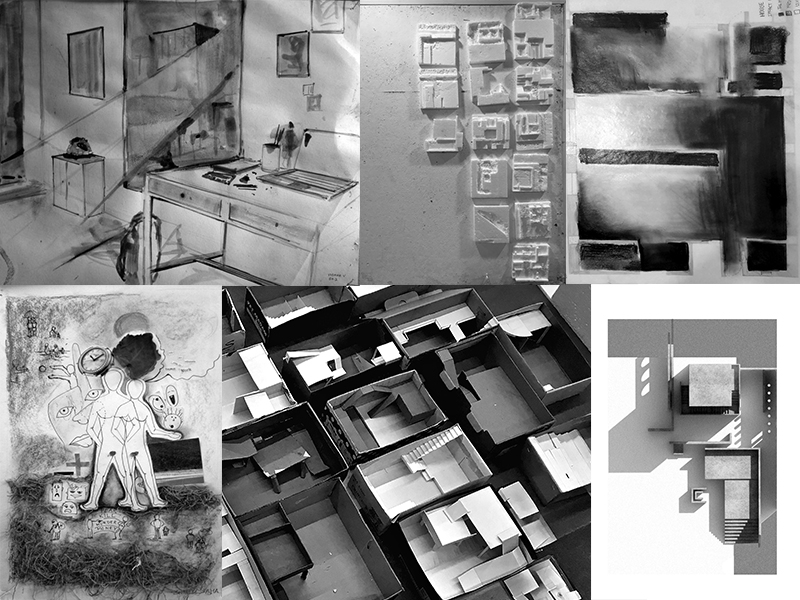
While the emphasis of the studio unit is on Planning & Organization, we will be unable to communicate without appropriate language and vocabulary. Visual & Spatial representation mediums of sketches, drawings, renderings and models are our primary language of communication. Verbal and textual languages are secondary. Besides a non-negotiable insistence on succinct representation of ideas, students are earnestly advised to consider each of the drawings and models as final, instead of seeking additional rendering time following an imagined finalization of design.
Students are required to dedicate four hours a week to visual and spatial representations exercises and discover the difference between the two. Geometric & organic model-making, drawing, sketching & painting in diverse media shall be explored in these sessions of representing from observation & imagination.
Documentation
Reflective journaling of studio work is critical. While students are expected to record their processes in terms of ideas, inspiration, references, parameters, choices etc., they are also required to reflect upon the surprises, insights, shifts and perceived learnings in their engagements. The reflective journal will be part of the presentation and discussion during the weekly reviews and hence needs to be frequently updated. Students are encouraged to maintain a multimedia journal that reflects the multidimensionality of their creative processes as closely as possible.20% of all assessment accounts for documentation with equal emphasis on recording & reflection.
Reviews
The work produced through the week in response to task and design briefs will be reviewed by peers and tutors every alternate Monday. Of the fourteen internal reviews in total, there are as many peer reviews as there are unit reviews; while four of the former are graded (PR2, 5, 6 & 7), all unit reviews shall be graded. From the 70% allocated for internal assessment, 20% accounts for Peer Reviews. The weekly review schedule is expected to help us closely monitor our progress through the week and avoid piling up of work for longer durations. Peer reviews help in inculcating empathy and responsibility within students towards closer participation, emotive yet professional communication and understanding the assessment criteria as well as the challenges of evaluation. The process of peer review is intended to reinforce the creation of a safe space for us to learn from each other’s creative individuality. While we seek to nurture care and trust within our small community which will be working closely for almost five months, please be cautioned that indifferent or vindictive engagement will not go unchecked and will invite disciplinary action.
Guest reviewers shall be invited for mid-term and term-end reviews to offer feedback from outsiders’ perspectives and open up our processes with questions and insights. We shall refrain from calling any of the reviews juries, since there shall be no judgment pronounced. While the reviewers – be it tutors, peers or guests – evaluate the presented work as per set criteria, they are only offering their perspectives and other imagined possibilities for the processes. The ownership and responsibility of the work as well as its development lie with the student who is the creative propeller of their processes.
Assessment
This grading system spread across the term is intended to ensure sustained engagement, close self-monitoring of progress and scope for successive improvement to the students. It diffuses the burden and overdependence on mid-term & term-end performances.
Each of the assessment categories and their subsequent criteria are defined thus:
REPRESENTATION: Skill in & Expression of Ideas, Explorations & Solutions
Succinctness: Appropriateness, Adequateness, Care & Technique
SUBMISSION: Delivery of Work and Studio & group Participation
Iterations: Number of Trials or Ideas Explored in the Course of Development
Completion: Fulfillment of Requisite Processes and Deliverables
Punctuality: Delivery of Assigned Task within Time Frame
Participation: Openness to Offering & Receiving Critique and Appreciation
ORGANIZATION: Degree of Resolution in Design Solution or Response to Task
Analyses: Understanding of Parts and their Relationships to the Whole
Structure: Integration/ Abstraction of Components & Relevance to/ of Layout/ Construct
Diversity: Variety of Ideas/ Elements/ Mediums/ Spaces in the Work
Synthesis: Assimilation of Parameters/ Insights/ Concerns within Solution
DOCUMENTATION: Compilation of the Design, Processes & Insights
Reflection: Deliberations on the High & Low Points and Shifts in the Process
The assessment criteria will also help students in not only structuring their presentations (using the parameters under Organization) but also in responding to the design or task brief. The organic creative process can be documented using the assessment criteria as parameters of recording & reflection.
Within Submission, participation is always assessed by peers, while the remaining three sub-criteria are evaluated by the tutor. While all six criteria within Representation & Submission will apply across all works irrespective of the nature of the exercise, applicability of criteria within Resolution will depend on the objectives and deliverables of an exercise. The assessment criteria will be clearly stated in each brief.
Ethics
We need to work along agreed rules:
punctuality in sessions & submissions
participation in reviews & discussions
accommodation of challenging perspectives and divergent methods
honesty in endeavor & communication
While all of us are expected to put in hard work to realize the objectives of this ambitious studio unit, it is advised that we neither lose sleep nor work at the 11th hour. It is vital to our efforts as a community that we value our individuality, express our views generously but not unnecessarily and check on our peers if they are doing okay.
It matters little to another’s learning if one were to be insincere in acknowledging references or participation in delegated tasks. However, an institutional framework requires formal assessment which is dependent on comparative evaluation of students’ works against set parameters. Dishonesty from any student destabilizes the playing field for all participants. To keep assessment processes fair to all, academic procedures cannot afford any tolerance for unfair means such as plagiarism, out-sourcing, intentional misrepresentation (group work, blank submissions etc.) and so on. Following a warning on the first instance, any evident repetition of dishonesty will invite disciplinary action.
Training
Besides the processes of organising & articulation spaces and their defining elements, this Studio Unit is also intended & designed for training in keeping time and observing one’s emotional upheavals. It is critical to manage our expectations while involved in creative processes so that we don’t lose sight of the objective of learning in the rush of completing tasks or getting overwhelmed by them. Observing the stimuli, its corresponding impulse within us and our responses is necessary to be in touch with what propels us and that with retards our mindful participation.
Students are discouraged from working late nights & losing sleep and particularly avoid the terror of 11th hour work. Be awake and aware during the scheduled studio hours, work in daylight and stay close to the stipulated input hours for the studio as well as other academic engagements. Pursuing other creative disciplines can benefit your core engagements in surprising and substantial ways.
A Vibrant Studio
Considering that the term is online it requires particular attention that exchange will be limited to visual, verbal and textual languages. This perhaps amounts to a small minority of our otherwise multi-dimensional & multi-sensorial perception and processing of information/ communication/ environment. Please make appropriate arrangements for your study place, devices and internet bandwidth such that we are communicating on time with our videos, speakers and microphones on (unless otherwise specified) in well lit spaces with least external disturbance from noise or distraction.
Weekly reviews with peers and tutors are expected to invigorate this online studio. Students will also be grouped in clusters of 3 to5 for discussions to keep the scale of engagements intimate and intense. The online space of conceptboard or any other platform prescribed by CEPT will be kept accessible to all throughout the term instead of only during reviews. Similar to the open tack boards available to us all during normal times, we hope this strategy will help us all in seeking & offering inspiration & feedback throughout the term. In addition, students are welcome to take initiatives to create and sustain a vibrant studio atmosphere particularly needed for online engagements.
READING LIST
Reading is important since it opens up the possibility of imagining new worlds, which one may never have the opportunity to experience. Reading is necessary because it is meditative (of course, depending on what one reads) and develops language and vocabulary. Reading is indispensable because it fires parts of the brain by inviting it to participate and complete a story in a manner which is different from the passive arousal of visual fast-food.
It will do a world of good if students read through some of the book listed below and also meet with their groups at least once a week to discuss the readings:
- Eyes of the Skin
Juhani Pallasma - The Thinking Hand
Juhani Pallasma - The Embodied Image
Juhani Pallasma - Atmospheres
Peter Zumthor - Poetics of Space
Gaston Bachelard - Body Memory and Architecture
Kent C Bloomer & Charles W. Moore - Conversations with Students
Louis Kahn - Louis Kahn: Essential Texts
Robert Twombly - A Pattern Language
Christopher Alexander - Questions of Perception: Phenomenology of Architecture
Alberto Perez Gomez, Juhani Pallasmaa and Steven Holl - In Praise of Shadows
Junichiro Tanizaki
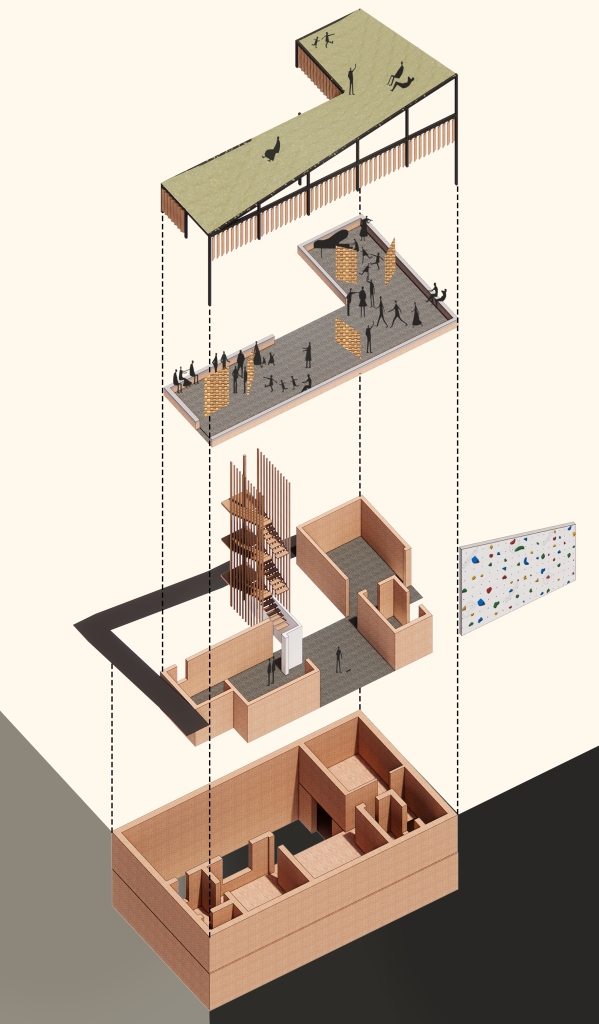
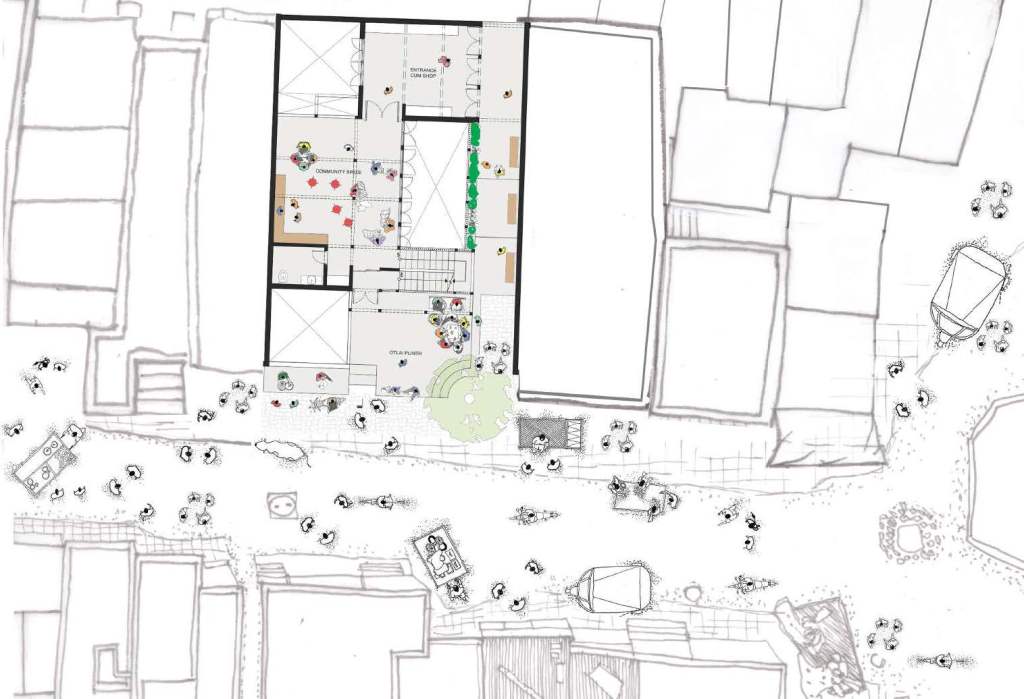
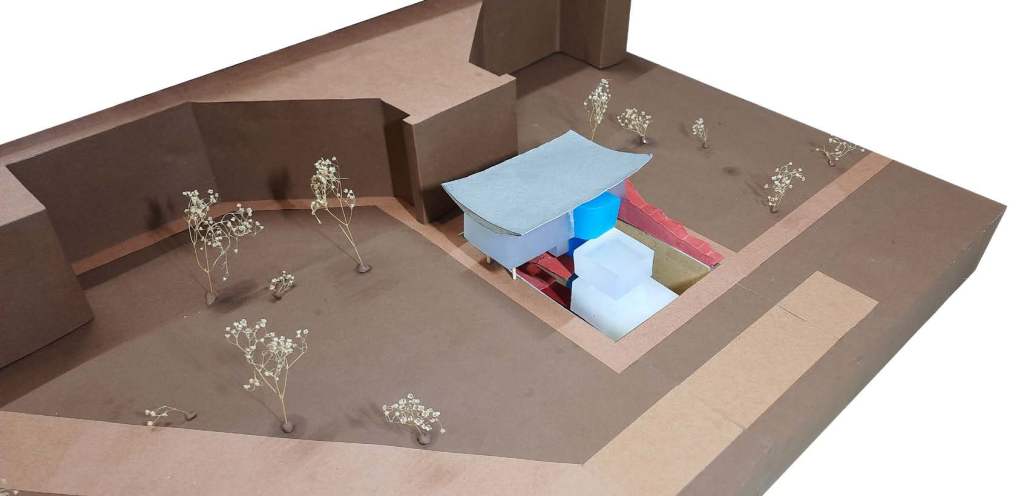
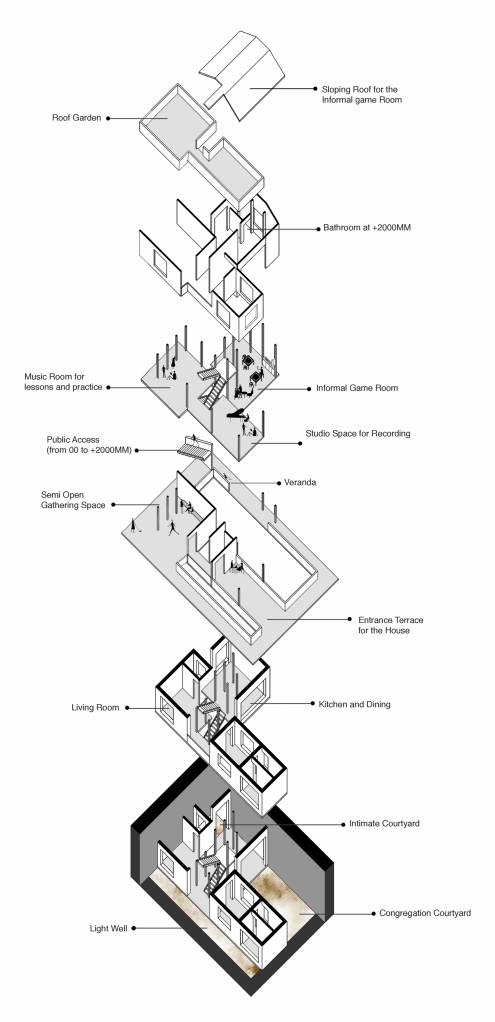
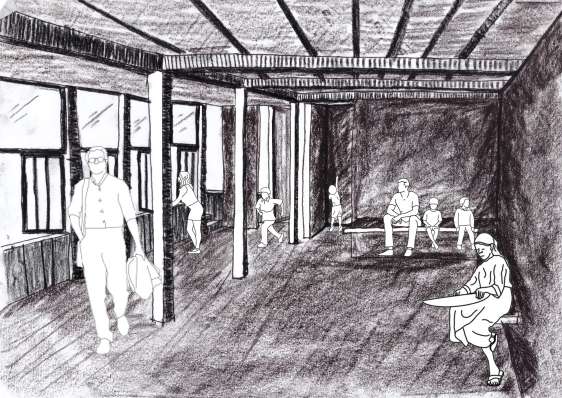

 malkum
malkum